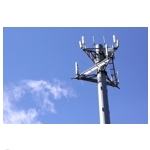 Bi-partisan legislation that passed the Senate Commerce Committee late last week aims to free up spectrum for 5G wireless. The bill, sponsored by North Dakota Republican Senator John Thune and Florida Democratic Senator Bill Nelson, is known as the MOBILE NOW Act, for Making Opportunities for Broadband Investment and Limiting Excessive and Needless Obstacles to Wireless.
Bi-partisan legislation that passed the Senate Commerce Committee late last week aims to free up spectrum for 5G wireless. The bill, sponsored by North Dakota Republican Senator John Thune and Florida Democratic Senator Bill Nelson, is known as the MOBILE NOW Act, for Making Opportunities for Broadband Investment and Limiting Excessive and Needless Obstacles to Wireless.
If passed, the Act would direct the FCC to explore a wide range of options for 5G wireless, including making high-frequency spectrum above 24250 MHz available for fixed or mobile wireless broadband and making frequencies between 3100 MHz and 3550 MHz available on a shared basis with federal users.
In a recent blog post, Thune hinted that 5G might have the potential to provide an alternative to landline broadband. 5G networks, he said, “will not only bring the already connected world closer together, but they can help connect rural areas, like some places in South Dakota, where high costs and other difficulties have delayed the high-speed broadband needed for robust Internet access,” he wrote.
It’s worth noting, though, that 5G high-frequency spectrum bands provide relatively short range coverage in comparison with today’s wireless networks. Accordingly, high-speed backhaul facilities – most likely over fiber – are expected to be critical to 5G networks. And installing those backhaul facilities in remote rural areas would be a substantial undertaking.
Verizon Executive Vice President Fran Shammo earlier last week said that using 5G as an alternative to landline broadband is technically feasible, but the company had yet to determine whether there was a viable business case for such an offering. Shammo also urged legislators to make spectrum available for 5G as soon as possible so that the technology could be promptly deployed.
The MOBILE NOW Act
If the MOBILE NOW Act were to pass, the FCC would be directed to accomplish several key tasks within specific time frames, including Issuing a notice of proposed rulemaking (NPRM) to consider authorizing high-frequency spectrum within two years. Spectrum bands under consideration include:
- 24250-24450 MHz
- 25050-25250 MHz
- 31800-33400 MHz
- 42000-42500 MHz
- 71000-76000 MHz
- 81000-86000 MHz
Frequencies with federal allocations within these bands would not be included in the NPRM.
Other FCC actions that the Act would require include:
- Evaluating the feasibility of allowing commercial wireless services to share the use of frequencies between 3100-3550 MHz and between 3700-4200 MHz with federal users and presenting a report to Congress within three years
- Adopting rules to permit unlicensed services where feasible in any guard bands specified for any new spectrum bands made available for commercial communications services, including spectrum that acts as a duplex gap between transmit and receive frequencies
- Taking action on an ongoing exploration of distributed antenna systems and small cell infrastructure by the end of 2016
- Establishing a national database of broadband facilities assets by June 30, 2018, with the goal of making it easier for entities building wireless networks to obtain backhaul facilities
- Working with other federal agencies to make recommendations about appropriate incentives for reallocating spectrum currently designated for federal use within 18 months
- Conducting a bidirectional sharing study to determine the best means of providing federal entities flexible access to non-federal spectrum within one year


